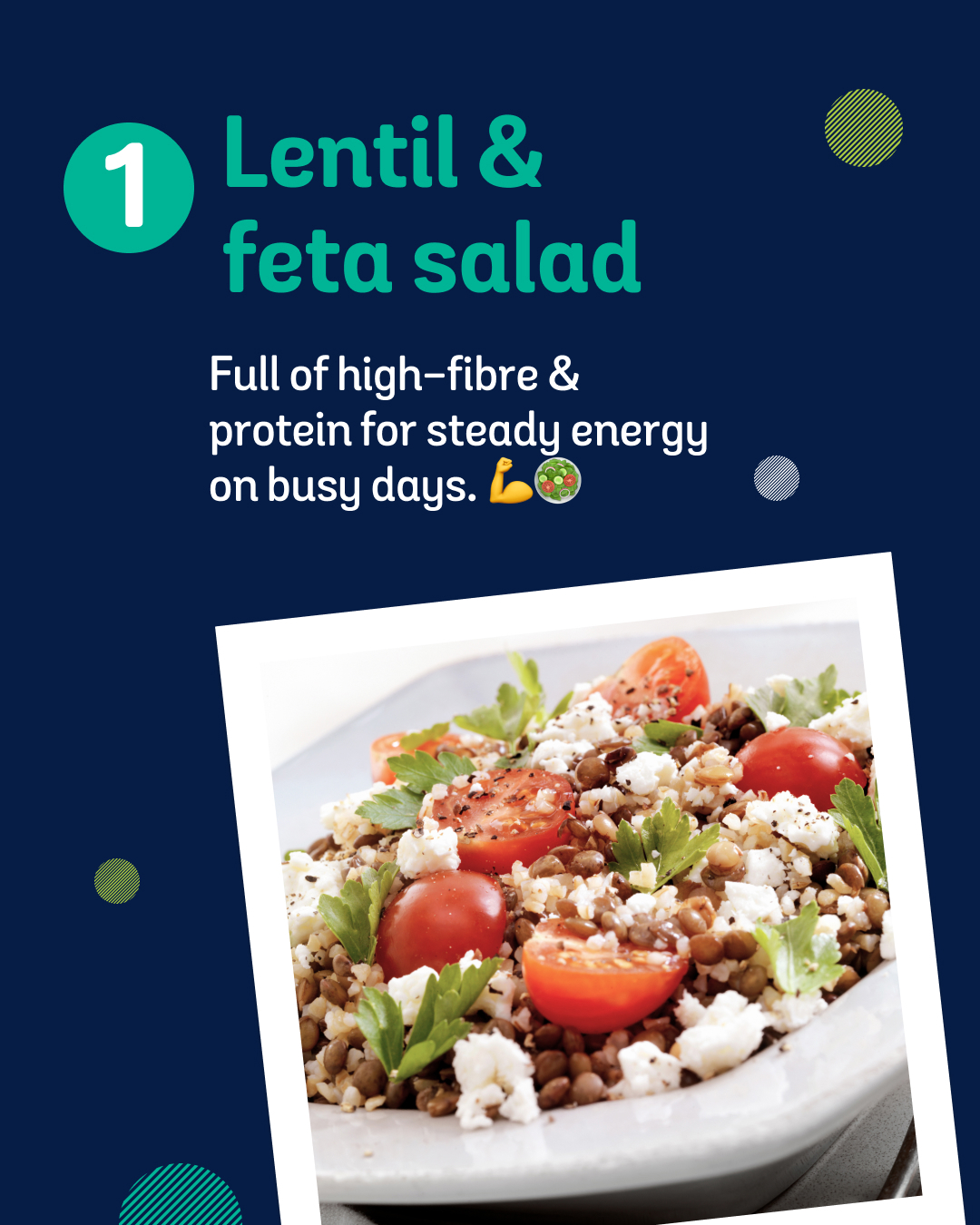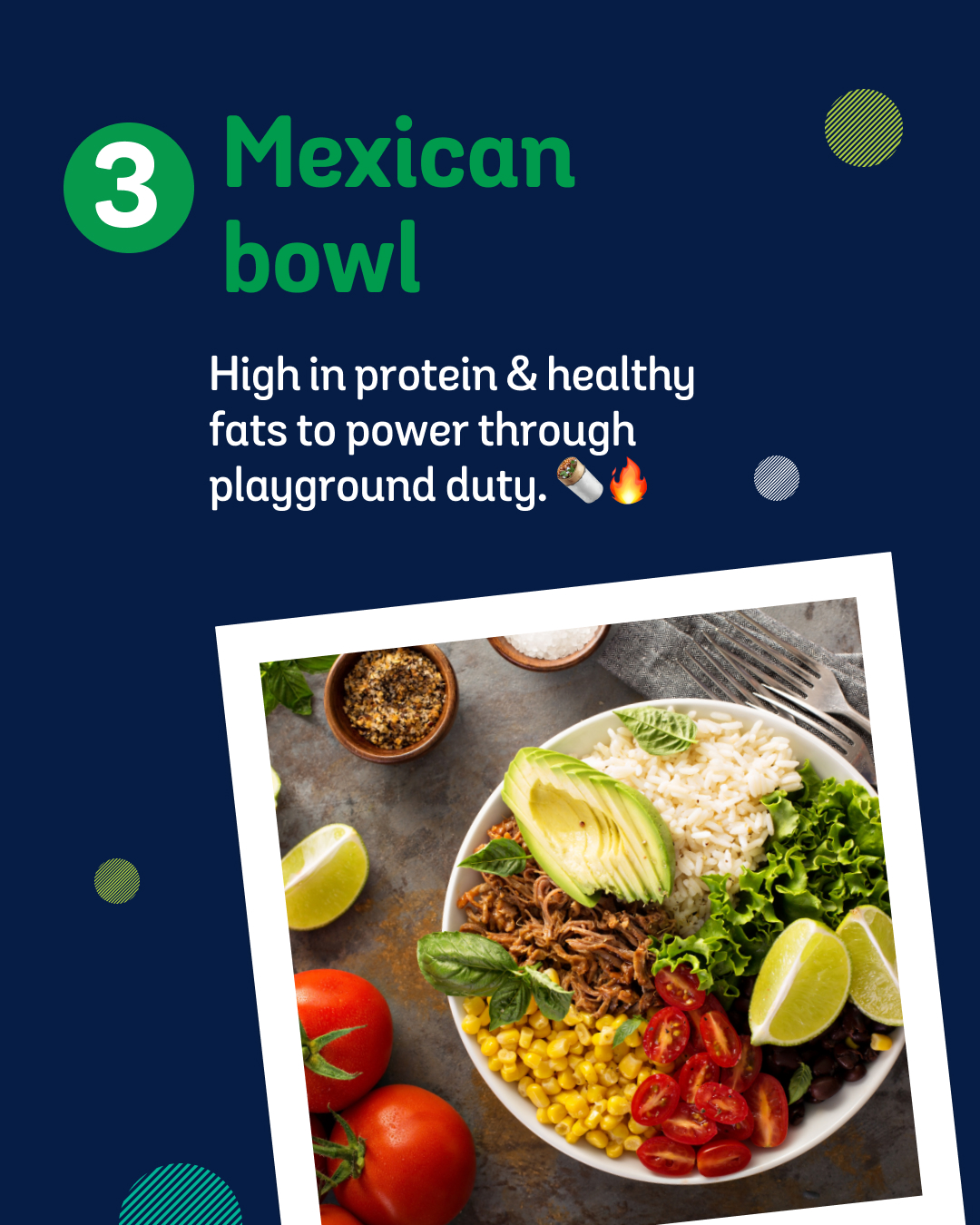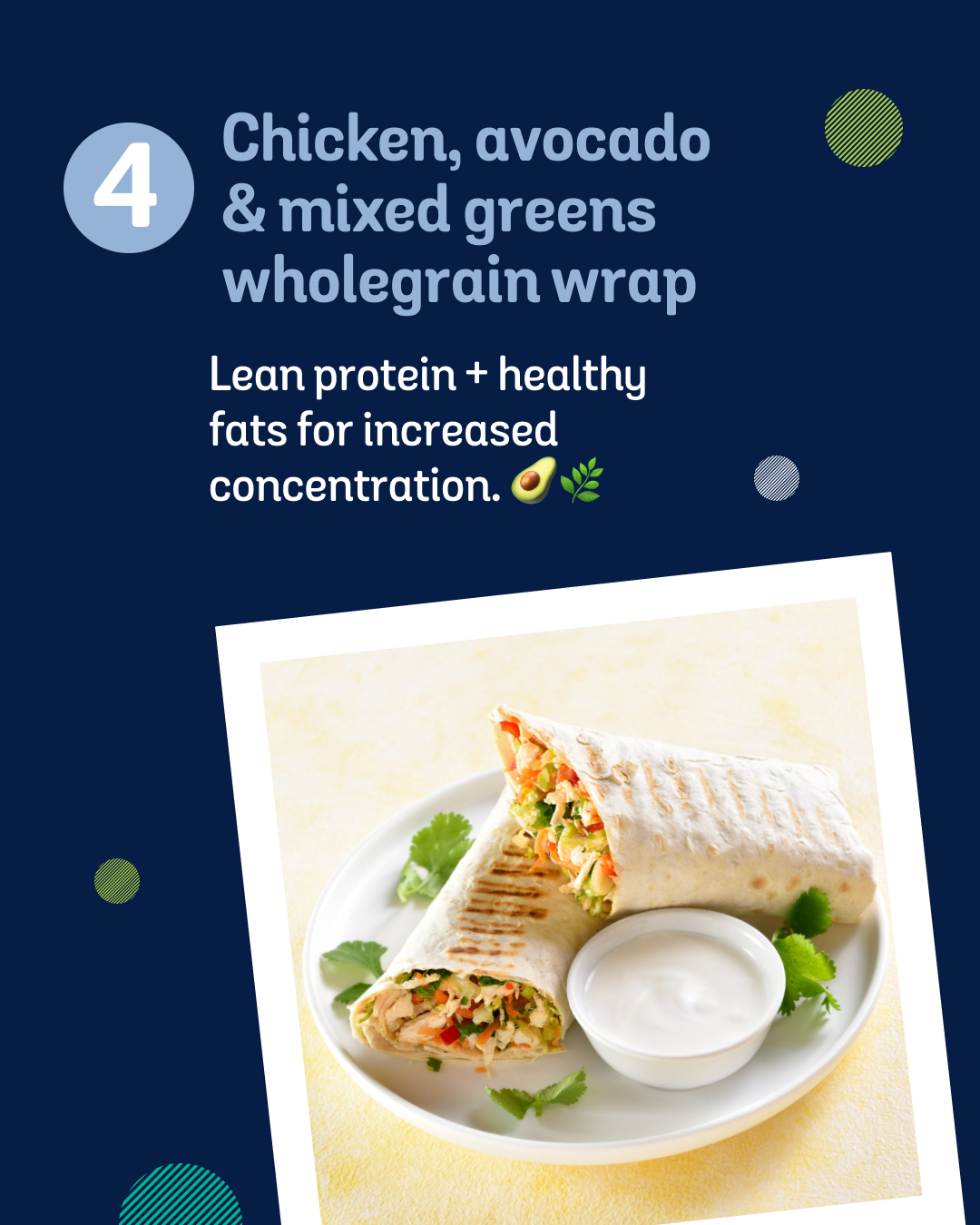
Fuelling up for the workday

2 April 2025
Expert contributor Barbara Yassa, Accredited Dietitian
Teachers know the struggle of making it through a long workday with energy to spare. Between early mornings, packed schedules, and limited breaks, eating well can feel like an afterthought. But according to Accredited Practising Dietitian Barbara Yassa, a few simple strategies can make eating well become second nature—without adding more to your plate.
Power through with the right fuel
Let’s make a difference to teachers’ wellbeing
Teachers Health Foundation is sponsoring groundbreaking research into a pilot program focused on boosting teachers’ healthy food and nutrition habits – and we need you!
Join our study
We’re looking for 200 classroom teachers or school executives (primary or secondary) across Australia to participate. If you’re over 18, have computer access, and want to improve your wellbeing, we want to hear from you.
What’s involved?
- Complete online modules (4 hours total over 4 months)
- Gain valuable insights into healthy eating and nutrition.
What’s in it for you?
- Three chances to win a $50 GiftPay voucher
- Complete all modules and enter a final draw to win one of four $150 GiftPay vouchers!
- Contribute to vital research that will support teacher health.
Want more info?
You’ll learn more about what’s involved when you register to participate. Don’t worry! Participation is voluntary, and you can withdraw from the study anytime.
Note: This study is being conducted by PhD candidate Tammie Jakstas at The University of Newcastle. By clicking the link above, you’ll be taken to their website and their privacy policy will apply.
The key to maintaining energy throughout the day is choosing foods that provide lasting fuel. A combination of high protein foods and high fibre foods can do just that. “Protein takes longer to digest, helping you feel fuller for longer, while fibre aids digestion and supports steady blood sugar levels—preventing those dreaded mid-afternoon energy crashes,” Yassa explains.
To set yourself up for success, she recommends stocking up the fridge or pantry with nutritious ingredients ahead of time. “If you have the right foods on hand, you won’t have to think twice about making a nutritious choice”.
When grocery shopping, focus on foods rich in protein and fibre:
- Protein: Greek yogurt, cheese, nuts, lean meats, eggs, tofu
- Fibre: whole grains, fruits, vegetables, legumes
By mixing and matching these ingredients, you can create simple meals and snacks that are both satisfying and nutritionally balanced.
Your energy roadmap: smart food planning
Having the right foods available is only part of the equation—planning when and what to eat can make a significant difference. While meal prepping might seem daunting, even a rough plan helps you stay on track as unplanned meals often lead to last-minute choices that may not be the best for our energy levels.
The first step is to start the day with a nourishing breakfast. This will ensure you can be well fuelled and ready to take on the day. Depending on time, your selection can be a quick smoothie, toast with added protein (e.g. nut butter or cheese), or bowl of wholegrain cereal with milk. For those mornings where you have more time, consider a cooked breakfast with eggs and vegetables.
Snacks often get a bad rep. But instead of viewing snacks as unhealthy impulse choices, recognise their role in fuelling you throughout the day, and plan your snack choices in advance. This can be an essential tool for sustaining energy and focus between meals and help to manage your hunger and portion sizes at lunch and dinner meals.
Packing easy-to-prepare lunches ensures you have nutritious meals on hand and won’t need to rely on takeaway foods that offer energy dense ingredients, or large portion sizes. To help out, here are some easy-to-pack lunches:




To make this even easier, here’s a handy guide to turn what you have in your kitchen into a simple grab-and-go option:
| Stock up on | To snack on | Or lunch on |
| Whole grain bread | Peanut butter & banana toast | Cheese & salad whole grain toast |
| Greek yogurt | Yogurt with berries & nuts | Falafel balls with tzatziki |
| Hummus | Hummus & veggie sticks | Whole grain wrap with hummus & chicken |
| Avocado | Avocado on wholegrain crispbreads | Mexican beef wraps |
While it can be challenging to find time to pause and eat as a teacher, setting aside even a short 10-minute break can make a big difference. This not only helps regulate your blood sugar levels, keeping you more productive and engaged, but will also prevent overeating later in the day, when you finally do eat.
Shift your mindset: food for enjoyment
Beyond knowing what and when to eat, having a positive mindset about food is just as important. Eating well doesn’t mean restricting yourself—it’s about balance.
Fruits and vegetables are always great choices, but cravings happen, and that’s okay. Instead of labelling foods as “good” or “bad”, focus on pairing treats with something nutritious. If you want a piece of chocolate, balance It with nuts, fruit or yoghurt for a more satisfying and nourishing snack.
Fuel your day, your way
“Your workday demands a lot,” Yassa concludes, “and your food should support your energy levels, not hold you back. Embrace balance. Stock up on healthy options, plan your meals and snacks, and allow for the occasional portion-controlled treat to help you maintain balance.”
With small, consistent changes, you can power through to the final bell feeling energised, focused and ready for whatever the rest of the day brings.




